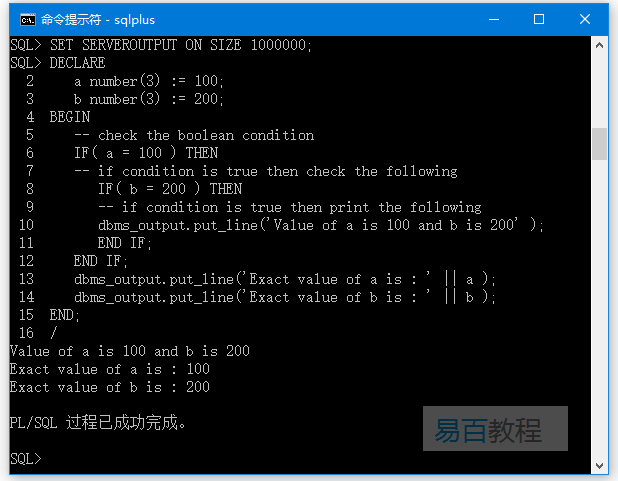PL/SQL巢狀IF-THEN-ELSE語句
2019-10-16 22:54:17
在PL/SQL程式設計中巢狀IF-ELSE語句總是合法的,也就是說可以在一個IF或ELSE IF語句中使用另一個IF或ELSE IF語句。
語法
PL/SQL中巢狀IF-ELSE語句的語法是 -
IF( boolean_expression 1)THEN
-- executes when the boolean expression 1 is true
IF(boolean_expression 2) THEN
-- executes when the boolean expression 2 is true
sequence-of-statements;
END IF;
ELSE
-- executes when the boolean expression 1 is not true
else-statements;
END IF;
範例
請參考以下範例程式碼 -
SET SERVEROUTPUT ON SIZE 1000000;
DECLARE
a number(3) := 100;
b number(3) := 200;
BEGIN
-- check the boolean condition
IF( a = 100 ) THEN
-- if condition is true then check the following
IF( b = 200 ) THEN
-- if condition is true then print the following
dbms_output.put_line('Value of a is 100 and b is 200' );
END IF;
END IF;
dbms_output.put_line('Exact value of a is : ' || a );
dbms_output.put_line('Exact value of b is : ' || b );
END;
/
當上述程式碼在SQL提示符下執行時,它會產生以下結果 -
